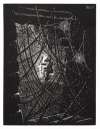Fernand
Leger
Fernand Léger revolutionised modern art with his vibrant, mechanistic abstractions and Cubist influence. If you’re looking for original Fernand Léger prints and editions for sale or would like to sell, request a complimentary valuation and browse our network’s most in-demand works.
Fernand Leger art for sale
Discover Fernand Leger prints for sale, exclusively available through our private network of collectors. Explore signed and unsigned screenprints, lithographs, digital prints, and rare editioned proof prints by era-defining blue chip artists.
Sell Your Art
with Us
with Us
Join Our Network of Collectors. Buy, Sell and Track Demand
Biography
Born in Normandy in 1881, Léger's early pursuits were far removed from the artistic career he would eventually establish. Apprenticed to an architect in Caen, Léger developed a fascination with the Parisian avant-garde. He subsequently moved to Paris, where his formal education in art began at the École des Arts Décoratifs and the Académie Julian. It was here that he immersed himself in the emerging currents of art that would shape his distinctive style.
Léger's approach took a dramatic turn with his exposure to Cubism, which significantly influenced his early paintings. However, it was the advent of World War I that formalised his unique approach. The mechanical world of the battlefield, with its confluence of man and machine, informed the cylindrical shapes that became synonymous with his version of Cubism, Tubism.
Throughout the 1920s and 1930s, Léger's work evolved into a celebration of the modern industrial age. He believed art should be accessible and resonate with the working class. This ethos led to his involvement in various collaborations, including set and costume design for film projects, which reflected his commitment to synthesising art and life.
Léger's output was prolific and diverse, but his dedication to depicting the rhythm and energy of the modern era remained constant. His murals and large-scale paintings, such as The City, depicted urban landscapes, capturing the fragmentation and sensory overload of contemporary life.
Léger's ascent was marked by pivotal exhibitions and collaborations that solidified his reputation as a revolutionary artist. His participation in the Salon des Indépendants and Salon d'Automne in Paris were critical in his early exposure to avant-garde circles. Notably, his 1912 exhibition at the Salon d'Automne is remembered for the debut of his distinct brand of Cubism, which drew both acclaim and controversy from critics and peers alike, positioning him as a leader in pushing the boundaries of traditional art forms.
Léger's collaboration with Swiss-French architect Le Corbusier on the Pavillon de l'Esprit Nouveau for the Exposition Internationale des Arts Décoratifs showcased his commitment to integrating art within everyday life, influencing the modernist movement in architecture and design. His international exhibitions not only broadened his influence across the Atlantic but also underscored his impact on the trajectory of modern art.




































